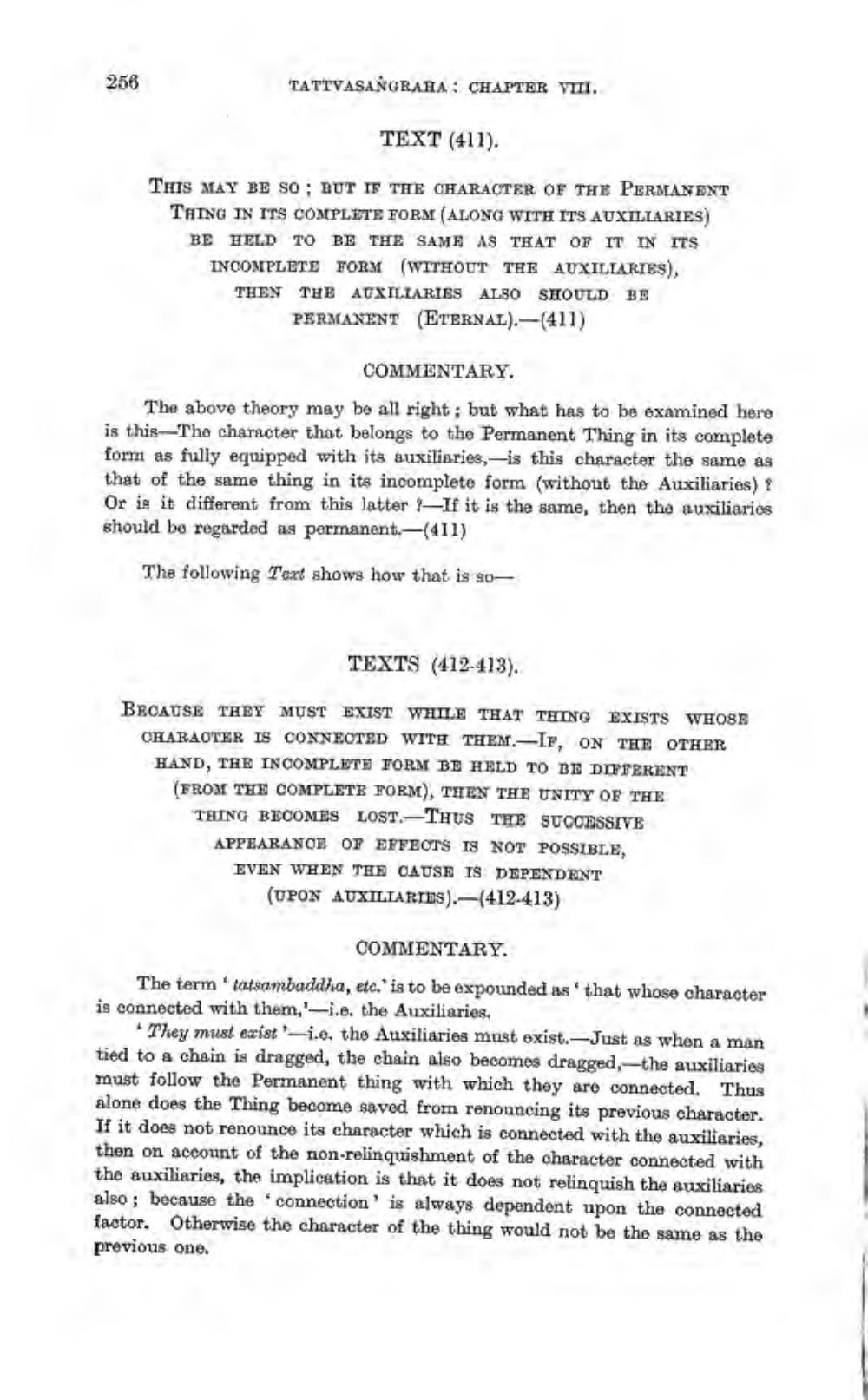________________
256
TATTVASANGRAHA : CHAPTER VIII.
TEXT (411).
THIS MAY BE SO ; DUT IF THE CHARACTER OF THE PERMANENT THING IN ITS COMPLETE FORM (ALONG WITH ITS AUXILLARIES) BE HELD TO BE THE SAME AS THAT OF IT IN ITS INCOMPLETE TORM (WITHOUT THE AUXILIARIES), THEN TUE AUXILIARIES ALSO SHOULD BE
PERMANENT (ETERNAL).-(411)
COMMENTARY.
The above theory may be all right; but what has to be examined here is this--The character that belongs to the Permanent Thing in its complete form as fully equipped with its auxiliaries,- is this character the same as that of the same thing in its incomplete form (without the Auxiliaries)? Or is it different from this latter -If it is the same, then the auxiliaries should be regarded as permanent.-(411)
The following Text shows how that is so
TEXTS (412-413).
BECAUSE THEY MUST EXIST WHILE THAT THING EXISTS WHOSE OHARAOTER IS CONNECTED WITH THEM.-IP, ON THE OTHER HAND, THE INCOMPLETH TORM BE HELD TO BE DIFFERENT (FROM THE COMPLETE TORM), THEN THE UNITY OF THE THING BECOMES LOST.-THUS THE SUCCESSIVE APPEARANCE OF EFFECTS IS NOT POSSIBLE, EVEN WHEN THE CAUSE IS DEPENDENT
(UPON AUXILIARIES).-(412-413)
COMMENTARY. The term tatsambaddha, etc.' is to be expounded as 'that whose character is connected with them, i.e. the Auxiliaries.
They must exíst-i.e. the Auxiliaries must exist.-Just as when a man tied to a chain is dragged, the chain also becomes dragged, -the auxiliaries must follow the Permanent thing with which they are connected. Thus alone does the Thing become saved from renouncing its previous character. If it does not renounce its character which is connected with the auxiliaries, then on account of the non-relinquishment of the character connected with the auxiliaries, the implication is that it does not relinquish the auxiliaries also; because the connection is always dependent upon the connected factor. Otherwise the character of the thing would not be the same as the previous one.




